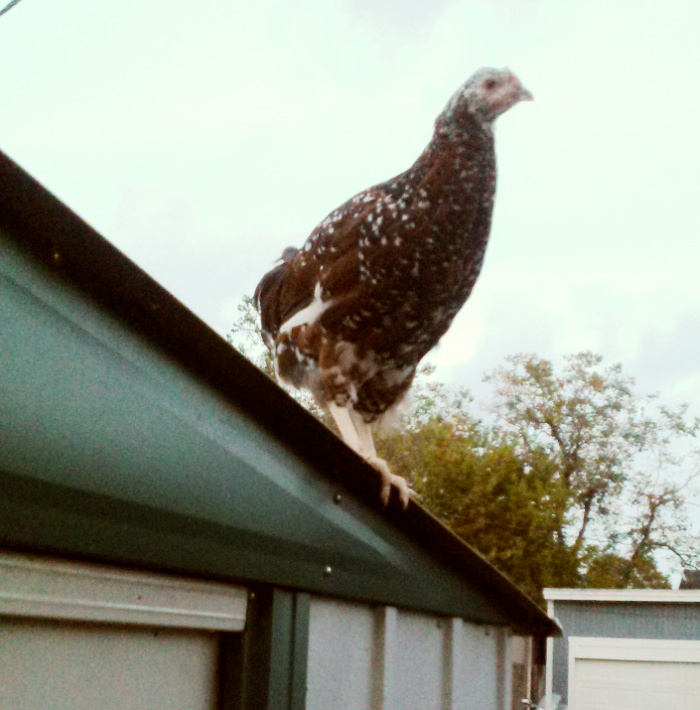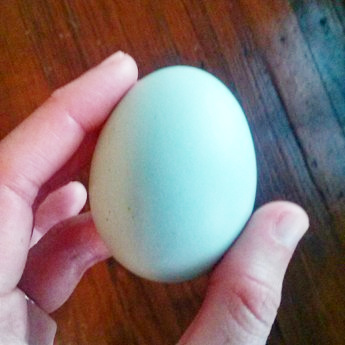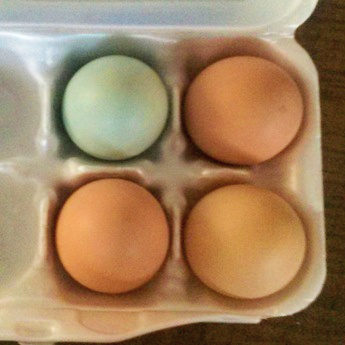



Why Farm Fresh Eggs Are Superior
Besides being fresher than grocery store eggs, farm fresh eggs taste better and have greater nutritional value because the chickens that lay them have a varied diet and healthy living conditions. See About the Chickens to learn more about the diet and living conditions of chickens at The Nest Next Door.
Shelf Life
Fresh eggs can be stored unrefrigerated for a month before needing refrigeration, though eggs have better flavor if eaten sooner. Source: The Happy Chicken Coop
Once eggs have been refrigerated, they must stay refrigerated until it's time to cook them. For this reason, eggs from The Nest Next Door are sold unrefrigerated, though buyers may choose to refrigerate them after purchase to extend shelf life.
To give the eggs even longer shelf life, you can wash them only right before use. A freshly laid egg has a transparent protective coating called the "bloom," which keeps out bacteria. Washing the egg removes the bloom, so eggs from The Nest Next Door are sold unwashed and might have an occasional smudge.
These Eggs Are Unfertilized
I live in an area where I can't have a rooster, since roosters crow at night as well as in the daytime. Hens will lay eggs even without a rooster around, but the eggs will be unfertilized.
Egg Oddities and What They Mean
Speckled shells: Speckles are extra calcium deposits. I keep a bowl of crushed oyster shell in the yard for the chickens to use as a calcium supplement. Chickens help themselves to it when the urge strikes them.
Irregularly shaped egg that might have a seam in the shell: Somehow, the shell cracked while it was forming and fused itself back together before the chicken laid it. (This occasionally happens to Jabberwock.)
Double-yolked egg: A double yolk is the chicken equivalent of twins. I've never known one of my chickens to lay one of these, but I'd want to know if it ever happened.
Blue-shelled egg: Some chickens are bred to lay eggs of interesting colors, such as pale blue, olive green, or chocolate brown. The pale blue eggs from the Nest Next Door all come from a hybrid chicken called an “Easter Egger” named Jabberwock. When you crack those eggs, you’ll notice that the shell is blue even on the inside, whereas the shell of a brown egg is white inside. For some reason, blue pigment is added earlier than brown pigment in the egg-making process.